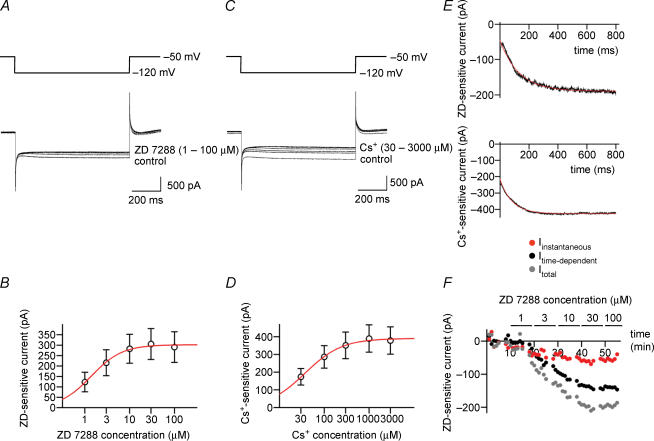Figure 3. Both external ZD 7288 and Cs+ block hyperpolarization-activated currents in BCs in a concentration-dependent manner.
A, traces of currents activated by hyperpolarizing pulses from a holding potential of −50 mV to a test pulse potential of −120 mV in the presence of different concentrations of ZD 7288 in the bath solution. B, amplitude of the ZD 7288-sensitive current, plotted against ZD 7288 concentration. Data points were fitted with a Hill equation, yielding an IC50 of 1.4 μm and a Hill coefficient of 1.3. Data from nine BCs. C, traces of currents activated by hyperpolarizing pulses from −50 to −120 mV in the presence of different concentrations of Cs+ in the bath solution. D, amplitude of the Cs+-sensitive current, plotted against Cs+ concentration. IC50, 37.4 μm; Hill coefficient, 1.1. Data from five BCs. E, onset time course of ZD 7288-sensitive current (upper trace) and Cs+-sensitive current (lower trace) obtained by digital subtraction of currents in the absence and in the presence of 100 μm ZD 7288 and 3 mm Cs+, respectively. Note instantaneous and time-dependent component. Red curves, fitted exponential functions. F, graph of amplitude of total Ih (grey circles), instantaneous component (red circles) and time-dependent component (black circles) during application of different concentrations of ZD 7288 (horizontal bars). Data in A, E and F are from the same BC. ZD 7288- and Cs+-sensitive currents were isolated by digital subtraction of traces before and after application of different concentrations of ZD 7288 and Cs+, respectively. In all experiments, 1 μm TTX, 3 mm 4-AP, 10 μm CNQX, 20 μm d-AP5 and 20 μm BIC were added to the bath solution.

